Tokyo
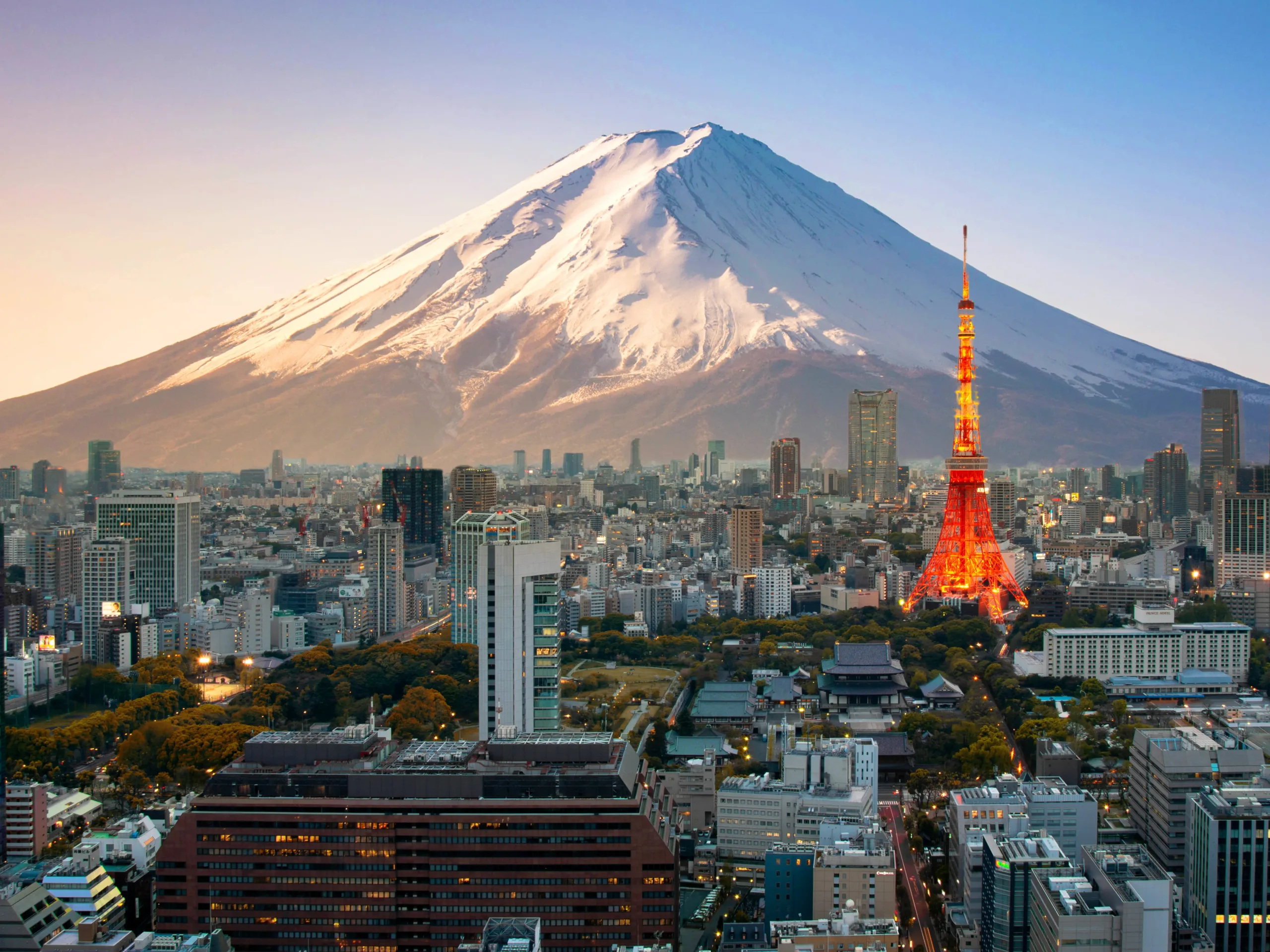 Discover why Tokyo stands as Japan’s ultimate city to visit, combining ancient tradition with cutting-edge technology in a dynamic urban landscape. Situated on the eastern coast of Honshu island, Tokyo is a mesmerizing blend of history, culture, and innovation.
Discover why Tokyo stands as Japan’s ultimate city to visit, combining ancient tradition with cutting-edge technology in a dynamic urban landscape. Situated on the eastern coast of Honshu island, Tokyo is a mesmerizing blend of history, culture, and innovation.1. Rich Cultural Heritage
Tokyo preserves its rich cultural heritage through sites like the Senso-ji Temple in Asakusa, where visitors can experience traditional Japanese architecture and rituals amidst a bustling urban backdrop. The Meiji Shrine in Shibuya also offers a serene retreat, contrasting with the city’s modernity.2. Innovative Technology Hub
As a global leader in technology, Tokyo showcases futuristic marvels such as the Tokyo Skytree and the Robot Restaurant in Shinjuku. These attractions highlight Japan’s advancements in robotics and entertainment technology, providing a glimpse into the future.3. World-Class Cuisine
Tokyo boasts the highest concentration of Michelin-starred restaurants globally, with diverse culinary experiences ranging from sushi and tempura to ramen and kaiseki. Tsukiji Outer Market and Shibuya’s izakayas offer authentic flavors that captivate food enthusiasts.Powered by GetYourGuide
4. Vibrant Urban Life
Tokyo’s neighborhoods like Harajuku and Ginza pulse with vibrant energy, offering shopping districts, trendy cafes, and unique fashion scenes. The city never sleeps, with karaoke bars, themed cafes, and entertainment arcades catering to every interest.5. Scenic Landscapes and Gardens
Escape the urban hustle in Tokyo’s tranquil gardens such as Shinjuku Gyoen and the Imperial Palace East Gardens. These green spaces provide a serene retreat amidst cherry blossoms in spring and vibrant foliage in autumn, reflecting Japan’s appreciation for nature.Kyoto
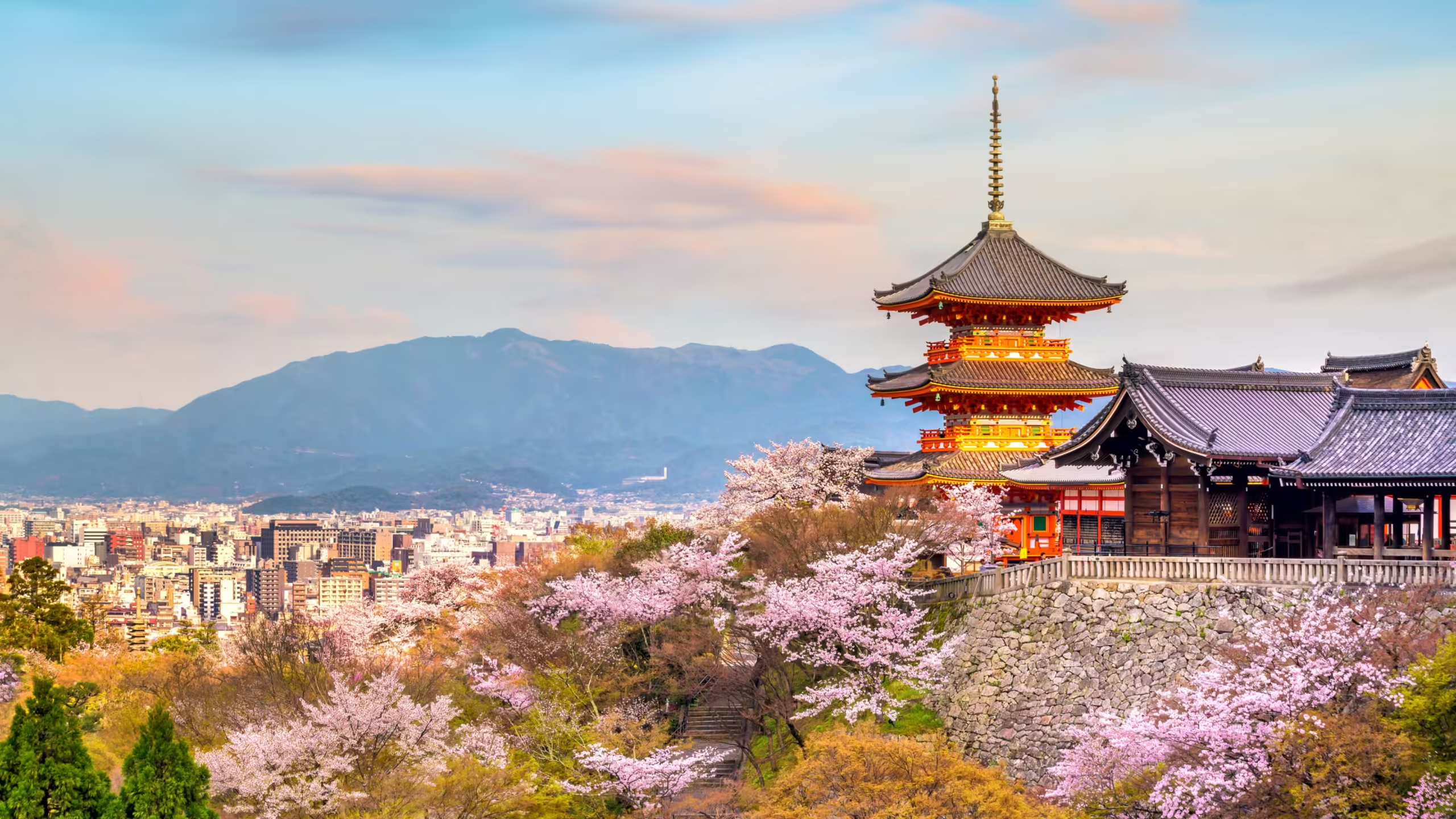 Discover why Kyoto ranks among Japan’s top cities to visit, celebrated for its rich cultural heritage, serene temples, and picturesque landscapes. Nestled in the Kansai region of Honshu island, Kyoto offers a glimpse into traditional Japan amidst a backdrop of natural beauty.
Discover why Kyoto ranks among Japan’s top cities to visit, celebrated for its rich cultural heritage, serene temples, and picturesque landscapes. Nestled in the Kansai region of Honshu island, Kyoto offers a glimpse into traditional Japan amidst a backdrop of natural beauty.1. Historical Landmarks and Temples
Kyoto is home to over 2,000 temples and shrines, including the iconic Fushimi Inari Shrine with its thousands of vermillion torii gates. Each site, such as Kinkaku-ji (the Golden Pavilion) and Kiyomizu-dera, reflects centuries of Japanese architectural and religious tradition.2. Traditional Arts and Crafts
Kyoto is a haven for traditional arts such as tea ceremony, ikebana (flower arranging), and kimono craftsmanship. Visitors can participate in these cultural practices through workshops and performances, gaining insight into Japan’s artistic heritage.3. Natural Beauty and Scenic Landscapes
Surrounded by mountains and lush forests, Kyoto offers breathtaking natural landscapes year-round. Arashiyama’s bamboo grove, the cherry blossoms of Maruyama Park, and the tranquil gardens of Nanzen-ji Temple provide serene escapes from urban life.Powered by GetYourGuide
4. Cultural Festivals and Events
Kyoto hosts vibrant festivals throughout the year, including Gion Matsuri in July, renowned for its elaborate floats and traditional performances. These events offer visitors a chance to immerse themselves in Japan’s festive traditions and community spirit.5. Traditional Cuisine and Culinary Delights
Kyoto’s cuisine reflects its historical significance, with kaiseki ryori (traditional multi-course meals) and yudofu (tofu hot pot) being local specialties. Nishiki Market beckons with its array of fresh produce and traditional snacks, enticing food enthusiasts.Osaka
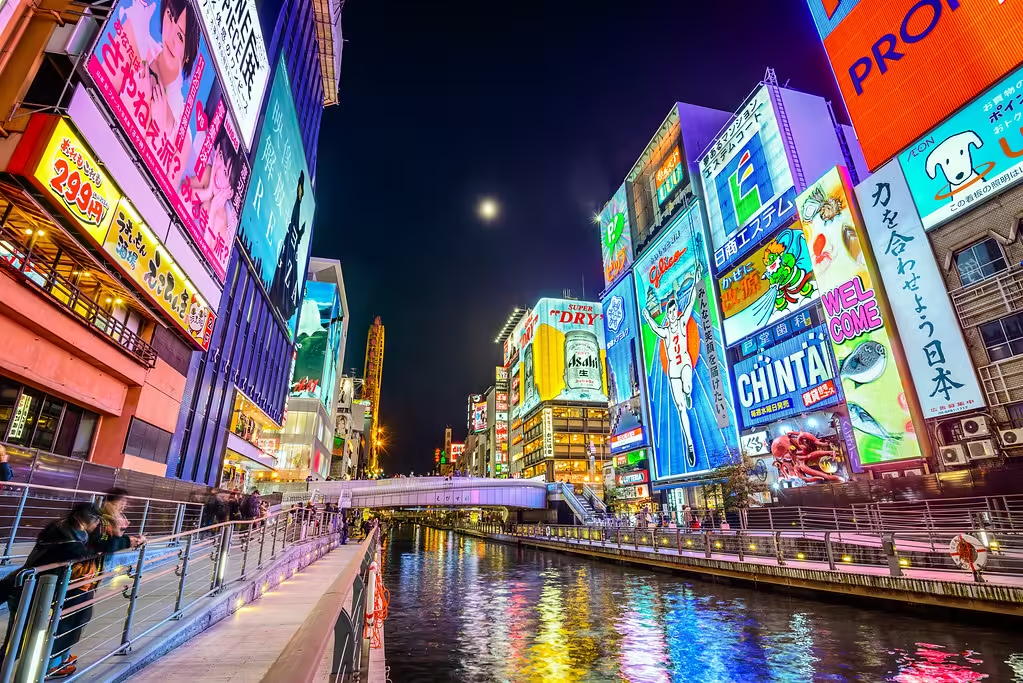 Discover why Osaka shines as one of Japan’s top cities to visit, blending historical charm with modern innovation amidst a lively urban atmosphere. Situated in the Kansai region, Osaka captivates visitors with its vibrant street food scene and iconic landmarks.
Discover why Osaka shines as one of Japan’s top cities to visit, blending historical charm with modern innovation amidst a lively urban atmosphere. Situated in the Kansai region, Osaka captivates visitors with its vibrant street food scene and iconic landmarks.1. Culinary Capital of Japan
Osaka is renowned as the ‘Kitchen of Japan,’ offering a diverse array of delicious street foods and gourmet dining experiences. From savory okonomiyaki and takoyaki to fresh sushi at Kuromon Ichiba Market, Osaka’s culinary delights cater to every palate.2. Historical Landmarks and Castles
Osaka Castle stands as a symbol of the city’s rich history and resilience. The castle’s impressive architecture and surrounding gardens attract history enthusiasts and photographers alike, offering panoramic views of the city skyline.3. Dynamic Shopping and Entertainment
Osaka’s bustling districts like Dotonbori and Shinsaibashi are vibrant hubs of shopping and entertainment. Neon lights, quirky signage, and bustling crowds characterize these areas, where visitors can shop, dine, and experience Osaka’s nightlife.Powered by GetYourGuide
4. Cosmopolitan Vibes and Modern Architecture
While steeped in tradition, Osaka also embraces modernity with landmarks like Umeda Sky Building and Abeno Harukas. These skyscrapers offer panoramic views of the city and showcase Osaka’s status as a thriving economic and cultural hub.5. Festivals and Cultural Events
Osaka hosts lively festivals such as the Tenjin Matsuri, one of Japan’s oldest festivals dating back over 1,000 years. This event features processions, fireworks, and traditional performances that celebrate Osaka’s cultural heritage and community spirit.Hiroshima
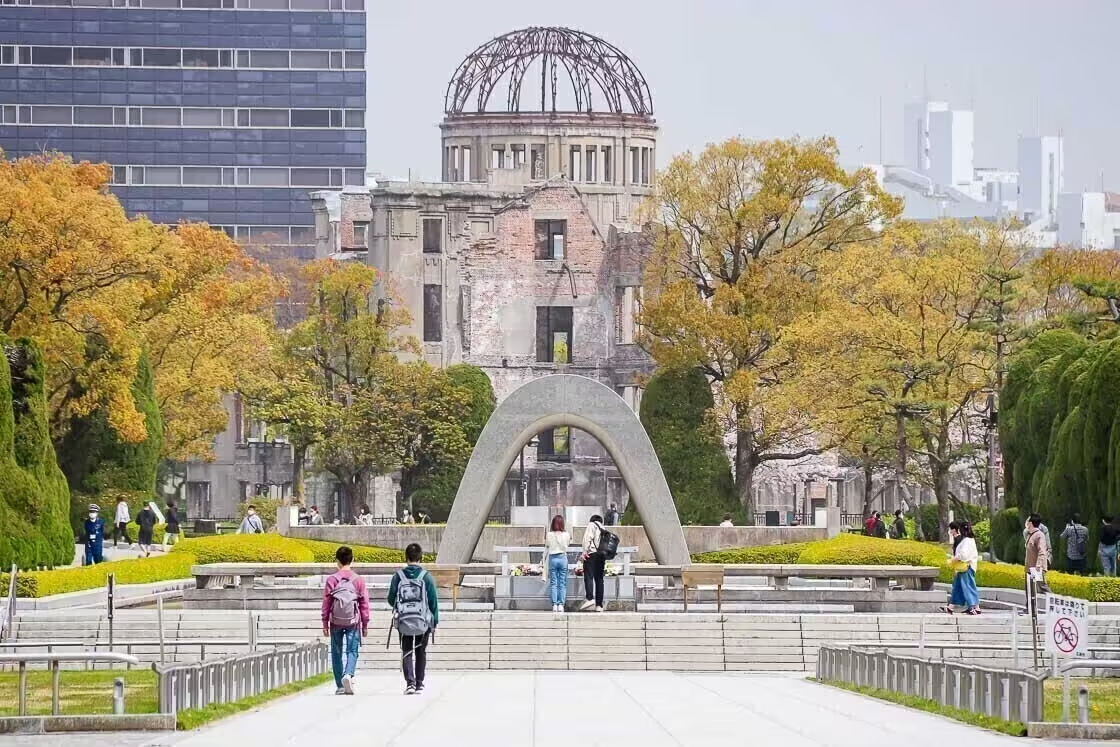 Discover why Hiroshima stands out as a compelling destination in Japan, blending poignant history with scenic beauty and a vibrant cultural scene. Located on the western side of Honshu island, Hiroshima offers visitors a profound journey through resilience and renewal.
Discover why Hiroshima stands out as a compelling destination in Japan, blending poignant history with scenic beauty and a vibrant cultural scene. Located on the western side of Honshu island, Hiroshima offers visitors a profound journey through resilience and renewal.1. Historical Significance and Peace Memorial
Hiroshima’s Peace Memorial Park and Museum are poignant reminders of the city’s tragic past and its subsequent commitment to peace. The Atomic Bomb Dome, a UNESCO World Heritage Site, stands as a symbol of hope and reconciliation.2. Scenic Landscapes and Islands
Hiroshima Bay and its surrounding islands, including Miyajima with its iconic Itsukushima Shrine, offer breathtaking views and cultural treasures. The floating torii gate and Mount Misen’s panoramic vistas make Miyajima a must-visit destination.3. Cultural Heritage and Arts
Hiroshima’s cultural scene thrives with traditional arts such as Hiroshima-style okonomiyaki and local crafts like Miyajima’s traditional souvenirs. The Hiroshima Castle and Shukkeien Garden exemplify the city’s historical and aesthetic charm.Powered by GetYourGuide
4. Cosmopolitan Dining and Local Cuisine
Hiroshima’s dining scene is diverse, blending local flavors with international influences. The bustling Hondori shopping street and Okonomimura, a multi-floor building dedicated to okonomiyaki, offer culinary delights for every palate.5. Festivals and Events
Hiroshima hosts vibrant festivals such as the Hiroshima Flower Festival and the Lantern Floating Ceremony. These events celebrate seasons and traditions, fostering community spirit and providing unique cultural experiences for visitors.Sapporo
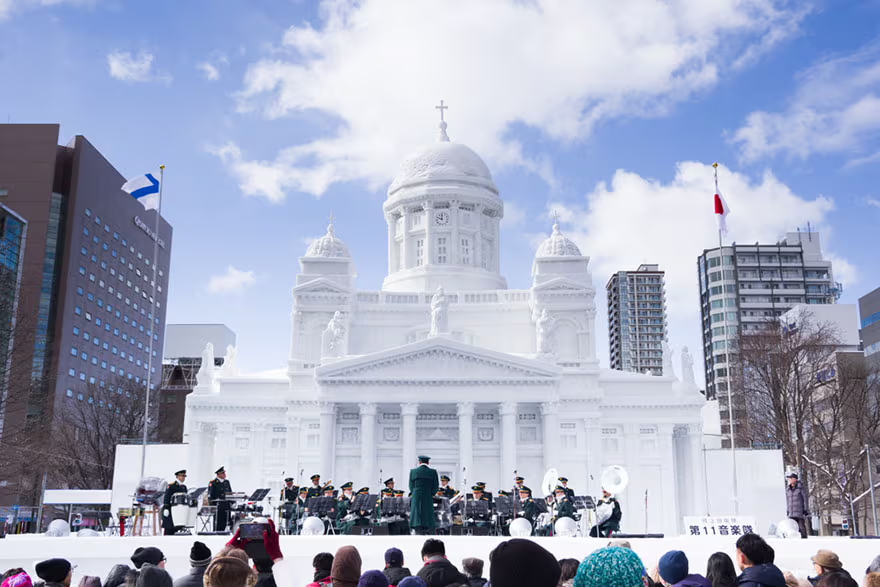 Discover why Sapporo is a top destination in Japan, known for its winter charm, culinary delights, and scenic beauty. Located on Hokkaido, Japan’s northernmost island, Sapporo offers a unique blend of urban sophistication and natural wonders.
Discover why Sapporo is a top destination in Japan, known for its winter charm, culinary delights, and scenic beauty. Located on Hokkaido, Japan’s northernmost island, Sapporo offers a unique blend of urban sophistication and natural wonders.1. Winter Wonderland and Snow Festival
Sapporo’s Snow Festival attracts millions with its intricate ice sculptures and illuminations. Held annually in February, Odori Park and Susukino transform into a magical winter wonderland, showcasing global artistic talent.2. Culinary Capital of Hokkaido
Sapporo is renowned for its local specialties like miso ramen, Genghis Khan (grilled lamb), and fresh seafood from the nearby Sea of Japan. Ramen Alley and Nijo Market are culinary hotspots that beckon food enthusiasts.3. Spectacular Parks and Gardens
The vast Moerenuma Park, designed by Isamu Noguchi, blends art and nature with its sculpted landscapes and outdoor artworks. Maruyama Park, famous for its cherry blossoms, offers tranquil retreats throughout the year.Powered by GetYourGuide
4. Vibrant Arts and Cultural Scene
Sapporo boasts Hokkaido University’s Botanic Garden and the Hokkaido Museum of Modern Art, showcasing regional flora and contemporary Japanese art. The annual Sapporo International Art Festival attracts artists and visitors worldwide.5. Outdoor Adventures and Natural Hot Springs
Surrounded by mountains and hot springs, Sapporo offers year-round outdoor activities. From skiing and snowboarding in winter to hiking and onsen (hot spring) retreats in Jozankei, nature lovers find bliss in Sapporo’s pristine landscapes.Fukuoka
 Discover why Fukuoka is a top destination in Japan, blending ancient traditions with modern conveniences amidst a rich cultural tapestry. Situated on the northern coast of Kyushu island, Fukuoka offers a perfect blend of historical charm and contemporary vibrancy.
Discover why Fukuoka is a top destination in Japan, blending ancient traditions with modern conveniences amidst a rich cultural tapestry. Situated on the northern coast of Kyushu island, Fukuoka offers a perfect blend of historical charm and contemporary vibrancy.1. Historical Landmarks and Castles
Fukuoka boasts historical treasures such as Fukuoka Castle and Ohori Park, where visitors can immerse themselves in centuries-old architecture and serene Japanese gardens. These landmarks offer glimpses into Fukuoka’s feudal past and cultural heritage.2. Gourmet Paradise and Street Food
Fukuoka is renowned as a culinary capital, famed for its tonkotsu ramen and yatai (street food stalls). The bustling stalls of Nakasu and Tenjin Yatai offer authentic local dishes in a lively, communal atmosphere.3. Thriving Arts and Music Scene
Fukuoka nurtures a vibrant arts community with venues like ACROS Fukuoka and the Fukuoka City Museum of Art. The annual Fukuoka Asian Art Triennale and eclectic music festivals attract artists and enthusiasts from across Asia.Powered by GetYourGuide
4. Natural Beauty and Island Escapes
Surrounded by natural beauty, Fukuoka offers easy access to tranquil islands like Nokonoshima and Shikanoshima. These islands are ideal for hiking, beachcombing, and enjoying stunning coastal views just a short ferry ride from the city.5. Shopping Haven and Urban Retreats
Fukuoka’s shopping districts like Canal City Hakata and Daimyo are vibrant hubs offering everything from designer boutiques to traditional crafts. Nearby Uminonakamichi Seaside Park provides a serene escape with its sprawling gardens and seaside views.Nagoya
 Discover why Nagoya shines as a top destination in Japan, blending ancient heritage with modern innovation amidst its dynamic urban landscape. Situated in the Chubu region, Nagoya offers a compelling mix of historical landmarks, culinary delights, and cultural experiences.
Discover why Nagoya shines as a top destination in Japan, blending ancient heritage with modern innovation amidst its dynamic urban landscape. Situated in the Chubu region, Nagoya offers a compelling mix of historical landmarks, culinary delights, and cultural experiences.1. Historical Landmarks and Castles
Nagoya Castle stands as a symbol of the city’s feudal past, renowned for its golden Shachihoko roof ornaments and historical artifacts. Nearby Atsuta Shrine, one of Japan’s most sacred Shinto shrines, attracts visitors with its serene ambiance and storied past.2. Cultural Institutions and Museums
Nagoya is home to the Toyota Commemorative Museum of Industry and Technology, celebrating Japan’s industrial heritage and the evolution of the Toyota Motor Corporation. The Tokugawa Art Museum showcases exquisite samurai artifacts and cultural treasures.3. Culinary Capital and Local Delicacies
Nagoya is a culinary paradise famous for dishes like miso katsu and hitsumabushi (grilled eel over rice). The bustling streets of Osu Kannon and Sakae district offer diverse dining options, from traditional izakayas to international cuisine.Powered by GetYourGuide
4. Modern Architecture and Cityscape
Nagoya impresses with its modern skyline dominated by the Nagoya TV Tower and the Oasis 21 complex. These architectural marvels provide panoramic views of the city and host cultural events, blending contemporary design with urban functionality.5. Festivals and Cultural Events
Nagoya hosts vibrant festivals such as the Nagoya Festival and the World Cosplay Summit, attracting enthusiasts from around the globe. These events celebrate local traditions, pop culture, and creative expression, adding vibrancy to the city’s cultural calendar.Yokohama
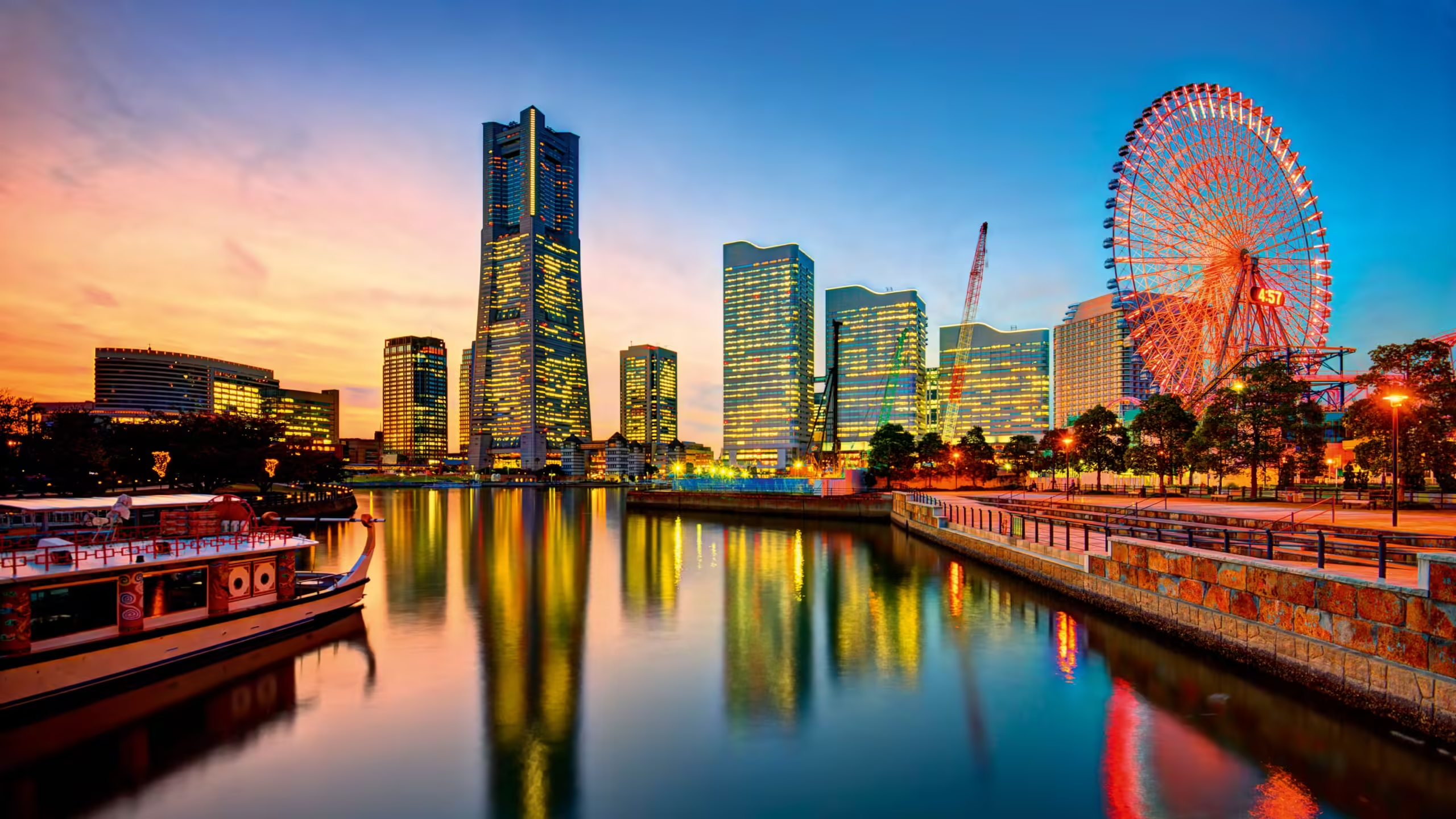 Discover why Yokohama stands out as a top destination in Japan, blending maritime heritage with modern urban attractions amidst scenic waterfront views. Located south of Tokyo Bay, Yokohama offers a diverse array of experiences ranging from historical landmarks to futuristic architecture.
Discover why Yokohama stands out as a top destination in Japan, blending maritime heritage with modern urban attractions amidst scenic waterfront views. Located south of Tokyo Bay, Yokohama offers a diverse array of experiences ranging from historical landmarks to futuristic architecture.1. Historical Landmarks and Harbor Views
Yokohama’s iconic landmarks include the historic Yokohama Red Brick Warehouse and Yokohama Landmark Tower, offering panoramic views of Tokyo Bay. These sites evoke the city’s maritime history and industrial heritage.2. Cultural Fusion and International Flavors
Yokohama’s Chinatown is Japan’s largest, renowned for its vibrant atmosphere and authentic Chinese cuisine. The city hosts events like the Yokohama Carnival, celebrating cultural diversity and international exchange.3. Modern Architecture and Skyline
Yokohama features modern architectural marvels like the futuristic Minato Mirai 21 district and the Cosmo Clock 21 Ferris wheel. Landmark Tower, Japan’s second-tallest building, provides stunning views from its observation deck.Powered by GetYourGuide
4. Parks and Gardens with Scenic Beauty
Yokohama boasts expansive green spaces like Yamashita Park and Sankeien Garden, offering peaceful retreats amidst urban bustle. These parks showcase seasonal flowers, traditional tea houses, and serene pond reflections.5. Maritime Heritage and Museums
Yokohama’s maritime history is preserved in attractions like the Yokohama Maritime Museum and Nippon Maru, a beautifully restored sailing ship. Visitors can explore Japan’s seafaring past through interactive exhibits and historic vessels.Nara
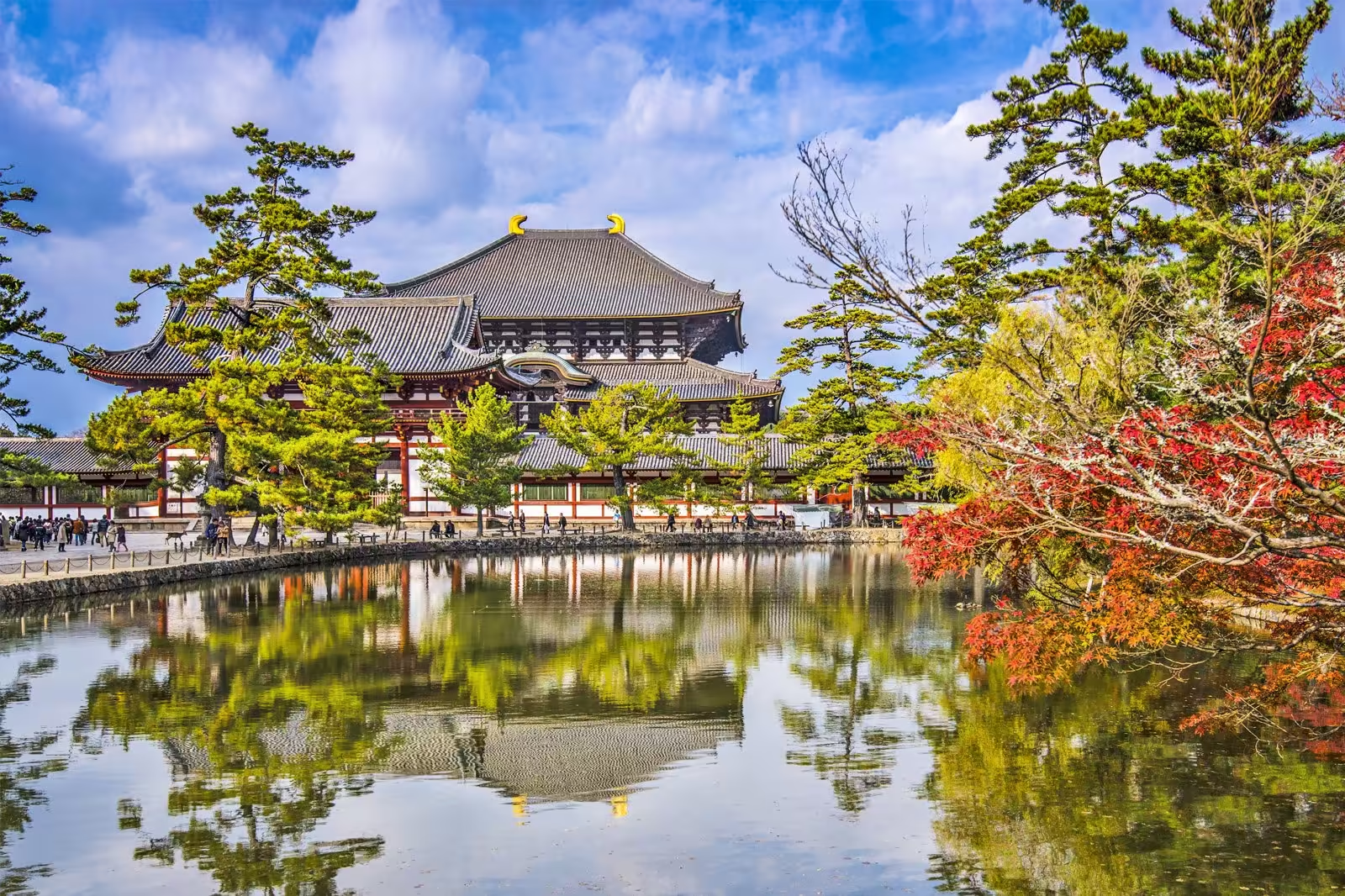 Discover why Nara stands out as a must-visit city in Japan, blending ancient history with serene natural beauty amidst its picturesque surroundings. Located in the Kansai region, Nara captivates visitors with its UNESCO World Heritage sites and tranquil atmosphere.
Discover why Nara stands out as a must-visit city in Japan, blending ancient history with serene natural beauty amidst its picturesque surroundings. Located in the Kansai region, Nara captivates visitors with its UNESCO World Heritage sites and tranquil atmosphere.1. Ancient Temples and Shrines
Nara is home to Todai-ji, housing Japan’s largest bronze Buddha statue, and Kasuga Taisha, known for its thousands of hanging lanterns. These sites reflect Nara’s rich religious heritage and architectural prowess.2. Deer Park and Sacred Deer
Nara Park is famous for its free-roaming deer considered messengers of the gods. Visitors can interact with these gentle creatures amidst the park’s serene landscape, offering a unique wildlife experience.3. Cultural Heritage and Artifacts
Nara National Museum showcases exquisite Buddhist art and artifacts, offering insights into Japan’s ancient cultural legacy. The museum’s collection includes rare scrolls, statues, and religious treasures.Powered by GetYourGuide
4. Traditional Crafts and Workshops
Nara preserves traditional crafts like sake brewing and yamato-kumihimo braiding. Visitors can participate in workshops to learn these ancient techniques, fostering a deeper appreciation for Nara’s cultural heritage.5. Scenic Beauty and Natural Landscapes
Nara’s surroundings boast scenic beauty with Mt. Yoshino’s cherry blossoms in spring and vibrant foliage in autumn. Yoshikien Garden and Isuien Garden offer peaceful retreats amidst meticulously landscaped grounds.Kanazawa
 Explore why Kanazawa shines as a top destination in Japan, blending rich cultural heritage with contemporary attractions amidst its scenic surroundings. Located on the western coast of Honshu island, Kanazawa offers a glimpse into traditional Japan with its well-preserved samurai districts and historic tea houses.
Explore why Kanazawa shines as a top destination in Japan, blending rich cultural heritage with contemporary attractions amidst its scenic surroundings. Located on the western coast of Honshu island, Kanazawa offers a glimpse into traditional Japan with its well-preserved samurai districts and historic tea houses.1. Historical Samurai Districts
Kanazawa’s Nagamachi district preserves the atmosphere of feudal Japan with its restored samurai residences and traditional tea houses. Visitors can immerse themselves in the city’s samurai history and architectural elegance.2. Kenrokuen Garden and Castle
Kenrokuen Garden is one of Japan’s most beautiful gardens, renowned for its seasonal beauty and meticulous landscaping. Nearby, Kanazawa Castle offers insights into Japan’s feudal past with its imposing architecture and historical exhibitions.3. Traditional Crafts and Artisans
Kanazawa is celebrated for its traditional crafts such as Kutani ceramics, gold leaf production, and intricate lacquerware. Visitors can explore workshops and galleries to witness these artisans at work, preserving centuries-old techniques.Powered by GetYourGuide



